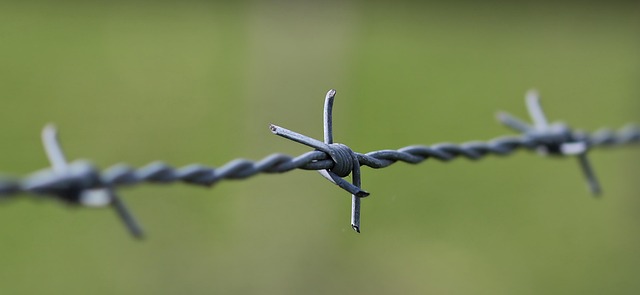In New Bedford, a well-maintained fence is not just an addition to your property but a statement of aesthetics and security. However, fences often face damage from harsh weather, pests, and general wear and tear. Understanding common issues like rot, broken posts, or damaged rails is the first step towards effective fence repair and installation. This article delves into these topics, offering insights on choosing suitable materials, conducting repairs, and maintaining your fence for longevity.
- Understanding Fence Damage: Common Issues in New Bedford
- The Importance of Professional Fence Installation
- Materials: Choosing the Right Fence for Your Property
- Step-by-Step Guide to Fence Repair
- Benefits of Regular Maintenance and Longevity of Fences
Understanding Fence Damage: Common Issues in New Bedford
In New Bedford, fence damage can stem from a variety of factors, including harsh weather conditions, tree roots, and pest infestation. One of the most common issues is rot, which can occur due to prolonged exposure to moisture, especially in areas with high humidity or near bodies of water. This not only weakens the structural integrity of the fence but also makes it more susceptible to collapse or break apart.
Another prevalent problem is damage caused by animals, such as deer and rabbits, who often browse on plants and trees growing along fences. Their constant gnawing can lead to significant wear and tear, particularly on wooden fences. Moreover, weather fluctuations, including heavy rains and strong winds, can cause fence posts to shift or become loose, resulting in bent or leaning fences that require immediate attention for safety and aesthetic reasons.
The Importance of Professional Fence Installation
A professionally installed fence is more than just a structural addition to your property; it’s an investment in security, privacy, and curb appeal. DIY enthusiasts might be tempted to opt for the most affordable option themselves, but proper installation requires specific tools, knowledge of local building codes, and a deep understanding of materials—all of which are crucial for ensuring longevity and structural integrity.
Professional fence installers bring expertise and experience to the table. They can guide you in selecting the best materials suited to your climate, soil conditions, and intended use. Moreover, they adhere to safety standards, guaranteeing a secure fence that withstands weathering and potential damage from wildlife or neighboring properties. A well-installed fence not only boosts the overall aesthetics of your home but also increases its value, providing peace of mind and a solid return on investment.
Materials: Choosing the Right Fence for Your Property
When considering fence repair or installation, selecting the right materials is a pivotal step. The ideal fence should not only complement your property’s aesthetics but also withstand environmental factors like harsh weather and local conditions. Wood, for instance, offers a classic look but demands regular maintenance; vinyl fences are low-maintenance alternatives but may be less resilient to extreme temperatures. Steel or iron fences provide durability and security but can be costlier.
Taking into account your property’s needs, climate, and personal preferences will help guide your decision. Local guidelines on fencing materials and styles should also be considered. Remember, the right fence not only enhances your outdoor space but also adds value to your property.
Step-by-Step Guide to Fence Repair
Step-by-Step Guide to Fence Repair
Before beginning your fence repair project, assess the damage. Inspect the entire length of the fence for loose or damaged boards, rot, and weak posts. Make a list of necessary materials, including replacement boards, screws, post supports, and paint (if you plan to refinish). Gather safety equipment such as gloves and eye protection.
Start by removing any debris or vegetation around the fence. Next, replace any rotten or damaged boards using new ones cut to size. Secure them in place with screws, ensuring they’re tight but not over-tightened. For weak posts, use post supports to reinforce them. After repairs, clean and paint the fence as needed to preserve its longevity.
Benefits of Regular Maintenance and Longevity of Fences
Regular fence maintenance is an investment that offers numerous advantages. By scheduling routine inspections and timely repairs, property owners can extend the life of their fences significantly. A well-maintained fence not only enhances the curb appeal of a home or business but also provides better security and safety. Over time, fences can develop issues like rot, rust, or damage from weather events, which can compromise their structural integrity. Prompt attention to these problems ensures that they don’t escalate, saving money in the long run by preventing the need for frequent replacements.
Moreover, regular maintenance allows for the early detection of potential risks. For example, checking for loose posts or rails can prevent accidents and keep fences secure around pools, playgrounds, or other areas requiring safety barriers. The longevity of a fence depends on consistent care, making it a smart and economical choice to budget for regular maintenance rather than facing costly repairs or complete replacements.
